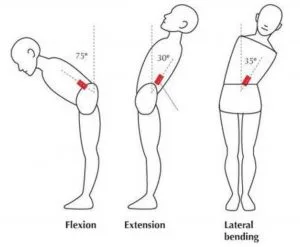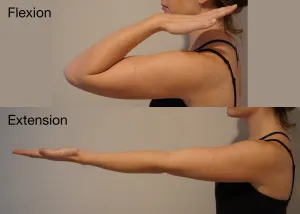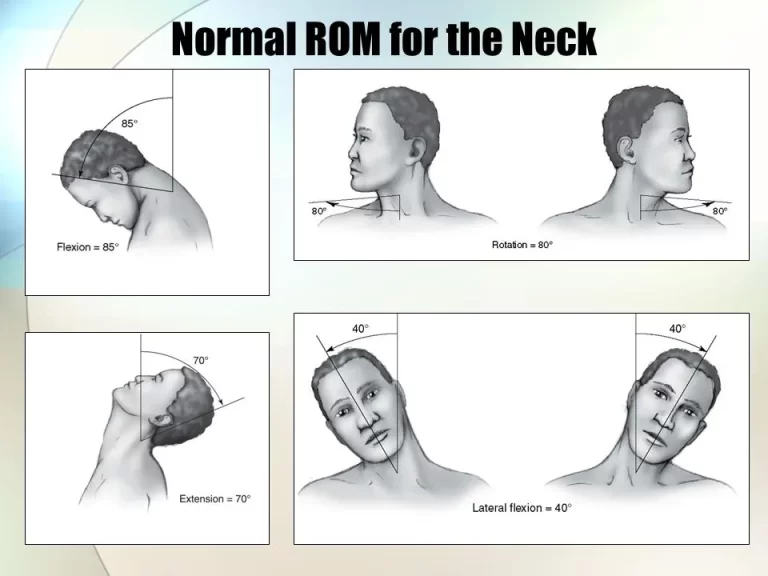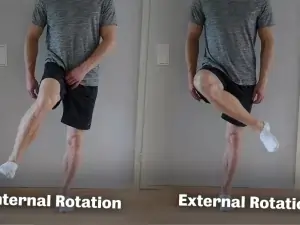Lumbar Flexion
What is a Lumbar Flexion?
Lumbar Flexion refers to the forward bending movement of the lower spine, where the angle between the spine and the pelvis decreases. This motion is commonly used in daily activities like bending to tie shoes and is essential for overall spinal mobility and flexibility.
What is Lumbar Flexion And Extension?
The two primary movements that take place in the lumbar area, or lower portion of the spine, are referred to as lumbar flexion and extension:
Lumbar Flexion: bends the lower back forward to lessen the angle between the front of the pelvis and the rib cage. Observe how your lower back will circle when you bend forward to touch your toes. Common uses for lumbar flexion include sitting and picking up objects off the ground.
Lumbar Extension: This motion is the reverse of flexion. The lower back is arched backward, increasing the angle between the rib cage and the front of the pelvis. Consider the motion you create as you stand with your back slightly leaned back. Lumbar extension is useful for tasks like gazing up or getting out of a seated position.
Lumbar Flexor Muscles
By flexing the lumbar spine, a group of muscles known as the lumbar flexors causes it to bend forward. Together, these muscles allow movements like forward bending and chest-to-thigh drawing. The main muscles of the lumbar flexors are as follows:
- Psoas major: This muscle is important for hip flexion and lumbar spine movement. It runs from the lumbar vertebrae to the thigh.
- Iliacus: a flat, triangular muscle located inside the pelvis, works in together with the psoas major to flex the hip joint and lumbar spine.
- Rectus abdominis: Also called the “abs,” this muscle runs along the front of the abdomen and aids with lumbar spine flexion, particularly when performing exercises like crunches or sit-ups.
- Tensor fasciae latae: This muscle helps with lumbar flexion to some degree, but its primary function is to flex and abduct the hip joint.
- External obliques: These muscles, which are diagonally distributed throughout the belly, aid in twisting the body and bending the spine forward.
When performing lumbar flexion exercises, remember that keeping these muscles flexible and getting the proper training are essential to avoiding strain and injury. It is always a good idea to see a fitness trainer or medical professional to ensure that you are using the proper techniques and exercises to work these muscles effectively and safely.
Lumbar Flexion Range of Motion
The range of motion (ROM) of lumbar flexion is the amount of forward bending that the lumbar spine can achieve. It varies from person to person and is quantified in degrees. The normal range for lumbar flexion is 40 to 60 degrees. This means that a person may move their chest nearer their thighs and bend forward at the waist while standing erect, usually reaching 40 to 60 degrees of forward flexion.
It’s crucial to remember, though, that several variables, such as age, fitness level, individual anatomical variations, and any underlying illnesses or injuries, can affect range of motion. Some people may have a greater range of lumbar flexion than others, while others may have restrictions because of things like spinal disorders or muscular tightness.
Maintaining a healthy and flexible range of motion in the lumbar spine is essential for daily activities and overall mobility. Maintaining proper posture and performing stretching exercises regularly can assist in maintaining and enhancing lumbar flexion.
To prevent injury, it’s crucial to carry out these exercises correctly and avoid from overstretching or placing undue tension on the lower back. For individualized advice and evaluation, it’s best to speak with a medical expert or a physical therapist if you’re uncomfortable or have questions about your range of motion.
How to Assess Lumbar Flexion Range of Motion
A straightforward test known as the lumbar flexion measurement can be used to assess your range of motion for lumbar flexion. Here’s how to accomplish it:
Preparation:
Find a level, sturdy surface to stand on, such as the floor or a yoga mat.
When you’re barefoot, make sure your feet are shoulder-width apart.
While not locked, your knees should be straight.
Method of Testing:
Find the tops of your hip bones, or iliac crests, on either side while placing your hands on your hips.
Use these sites as reference points to ensure precise measurements.
Maintain a slight arch in your lower back while standing erect and with your spine in a neutral position.
Start by slowly bending forward at the waist to bring your chest closer to your thighs.
Keep your knees straight during every exercise.
Continue bending until your lower back or hamstrings begin to feel a little strained or unpleasant.
Measurement
To determine the angle of lumbar flexion when bending forward, use a measurement device or a companion.
The measurement is taken from the starting upright posture (neutral spine) to the point at which your spine is fully flexed.
The angle reached during the forward bend indicates the range of motion for lumbar flexion.
Documenting the outcome:
Note the angle that was reached during the test.
Repeat the test a few times to make sure that your measurements are consistent.
Remember that this test is merely a simple method of assessing your range of motion in lumbar flexion. For more comprehensive and precise assessments, consult a physician or physical therapist. They can do a thorough assessment and provide recommendations that are specific to your needs. Additionally, they can eliminate any underlying problems or factors that might be affecting your lumbar flexibility.
Lumbar Flexion Test
The Modified Schober Test can be utilized to perform a basic lumbar flexion test. It’s a popular and reliable technique for determining the lumbar spine’s range of motion. Here’s how to accomplish it:
Preparation:
Find a stable, flat surface, such as the floor or an examination table, to stand on.
To stand barefoot, place your feet shoulder-width apart.
Method of Testing:
- Use your fingers to locate the dimples or bony prominences of your lower back (posterior superior iliac spines, or PSIS) to identify the landmark. These points are situated just above your buttocks on your hips.
- Put a marker on the landmark: Make tiny dots over the PSIS points on both sides using a piece of tape or a non-permanent marker.
- Determine the point of reference: Ten centimeters, or around four inches, above each PSIS point, measure and mark a horizontal line. To guarantee accuracy, you can use a tape measure or ruler.
- Try the test: With your feet shoulder-width apart, assume an erect stance. You can use a measuring tool or your partner to assist you with this test.
- Bend forward at the waist as much as is comfortable while maintaining a straight knee position.
- The distance between the two dots you made on your lower back will then be measured by your partner or the measuring devices when you bend forward.
Measurement
When you bend forward, your lumbar flexion range of motion is shown by the distance between the two markings on your lower back.
A proper lumbar flexion range in the Modified Schober Test should ideally expand by at least 5 cm or around 2 inches.
A simple screening method that provides a measure of lumbar flexion is the Modified Schober Test. A physical therapist or other healthcare provider should be consulted for a more thorough and accurate evaluation, or if you have any concerns about your lumbar flexibility or feel pain during the exam. Based on your unique demands, they may perform a thorough assessment and offer suitable options.
Special Test For Lumbar Flexion
Of course! Here’s how to perform a quick and secure test to measure your lumbar flexion:
Lumbar Flexion Test While Seated:
- Standing on a stable platform, such as a chair or stool, place your feet flat on the floor and your knees at a 90-degree angle.
- With your fingers pointing forward, place your hands on your thighs.
- Start by sitting up straight and maintaining a neutral spine—that is, without an arch or rounding in the lower back.
- Sliding your hands down your thighs, begin bending forward at the waist slowly and gently.
- Keep bending forward until your hamstrings and lower back start to feel slightly stretched or uncomfortable.
- Return to the initial upright position gradually after holding the position for a brief period of time.
Lumbar Flexion Test While Standing:
- You can either hang your arms loosely by your sides or cross them in front of your chest.
- Before you start, stand upright with a neutral spine and keep your lower back slightly arched.
- Bring your chest closer to your thighs by bending forward at the waist slowly and evenly.
- Throughout the exercise, maintain a straight knee position.
- Keep bending forward until your hamstrings and lower back start to feel slightly stretched or uncomfortable.
- Return to the initial upright position after holding the position for a brief period.
In all examinations, keep in mind to move carefully and avoid from making abrupt or aggressive motions. Finding your comfortable range of motion without causing you any discomfort or strain is the aim. It is advisable to get advice from a physical therapist or healthcare expert for a more thorough assessment and suitable treatment if you feel any discomfort or if your lumbar flexion appears to be restricted. They can provide you with stretches or exercises that can safely increase your lumbar flexibility.
Manual Testing of the Trunk Flexion
The trunk’s muscles, which move and stabilize the trunk or core area of the body, are tested manually to determine their strength and stability. It evaluates the strength and integrity of these muscles by applying resistance to particular activities.
Muscle testing
- Rectus abdominis
- Externus Obliques
- Internus Obliques
Position of the patient
When evaluating a grade 5 patient, the patient should be lying down with his fingertips softly touching the back of his head.
A grade 4 patient should be in a supine position with his arms folded across his chest for evaluation.
The patient should be supine with their arms by their sides for a grade 3 examination.
To assess grades 0–2, the patient should lie supine with his arms by his sides and his legs bent.
Position of the Therapist
To make sure that the scapulae are off the table throughout the test, grade 3–5 therapists should stand on the side of the plinth at chest level.
Therapists getting grades 0–2 for the test should be. As the person standing at the side of the plinth positions the palpation hand in the midline of the thorax on the linea alba, the rectus abdominis muscle is felt with the four fingers of both hands.
What is the test procedure?
A full range of trunk flexion is required of the patient to evaluate grades 3 through 5. The trunk bends until the scapulae are off the table to create the illusion of a curl-up.
A patient’s head should be raised off the plinth to try to evaluate grade 2. When the scapulae do not clear the plinth, Grade 2 should be taken into account.
When palpating the rectus abdominis muscles for tests in grades 0 and 1, therapists can use the coughing technique or the assisted forward lean technique in the same position.
Exercise for Lumbar Flexion
Knee-to-Chest Exercise
 One-Knee-to-Chest
One-Knee-to-Chest
- Position at Start: Stretch your legs straight out on the ground.
- Lumbar flexion: Breathe in deeply. Pull one knee slightly toward your chest with both hands as you release the breath. Your other leg should remain extended along the floor.
- Maintain the Stretch: Feel the stretch in your hips and lower back as you hold the knee-to-chest posture for 20 to 30 seconds. Continue to breathe slowly and calmly.
- Sides of the switch: Change to the opposite leg after releasing the knee you were gripping.
Repeat the knee-to-chest stretch on the other side, holding it for 20 to 30 seconds.
Knee to the chest on both knees:
 Double Knee to Chest
Double Knee to Chest
If it’s comfortable, you can also bring both knees to your chest at the same time and clasp them together with your arms.
Repetition:
On each leg, repeat the exercise two to three times, or as often as you choose.
The lumbar spine is softly stretched and flexed by the knee-to-chest stretch, which increases lower back flexibility and mobility. The lower back area is generally relieved by this exercise, which also extends the hip flexors and glutes.
It’s important to listen to your body and avoid any unpleasant or uncomfortable movements, just like with any other exercise. Before performing this or any other lumbar flexion exercise, think about speaking with a medical practitioner or physical therapist if you have any pre-existing back conditions or concerns. They may evaluate your demands and offer advice on how to carry out the activity safely and efficiently.
You can try this additional useful lumbar flexion exercise:
Bending Forward While Seated:
 Seated lumbar flexion
Seated lumbar flexion
- Starting Position: Maintain a straight back and flexed feet with toes pointed up toward the ceiling.
- Lumbar flexion: Take a deep breath and extend your back. Start bending forward at the hips gradually as you release the breath, starting with your chest. As you drop your chest toward your thighs, maintain a straight back. Depending on your level of flexibility, extend your hands forward to touch your toes or hold your shins, ankles, or feet.
- Maintain the Stretch: Hold the position for 20 to 30 seconds once you’ve reached a comfortable stretch point. Throughout the stretch, maintain a regular and relaxed breathing pattern.
- Let Go and Do It Again: Breathe deeply as you slowly raise yourself back up to the starting position while keeping your back straight. Do the forward bend two or three more times.
- Modifications: You can wrap a strap or towel over your feet to help with the stretch if you have trouble reaching your feet or if your lower back hurts. To lessen the tension on your hamstrings, you can also bend your knees slightly if needed.
Stretching the lower back, hamstrings, and calves is one benefit of this seated forward bend. This exercise can help relieve tight lower back muscles and increase lumbar flexibility when performed regularly.
To keep the lower back flexible and mobile, it may help to increase lumbar flexion. This easy exercise can assist improve lumbar flexion:
Cat-Cow Stretch
- Starting Position: Take a table position on your knees.
A neutral spine is neither rounded (cat position) nor arched (cow position). - Lumbar Flexion (Cat Stretch): Exhale while tensing your abdominal muscles to raise your back like a cat in a stretch. Exhale while tensing your abdominal muscles to raise your back like a cat in a stretch. Pull your chin up to your chest while lowering your head gently. Feel the entire length of your spine stretch as you hold the rounded position for a few seconds.
 Cat-and-Cow-Stretching
Cat-and-Cow-Stretching
Lumbar Extension (Cow Stretch):
- Inhale, arch your back, open your chest, and raise your head and tailbone toward the ceiling.
- Drop your stomach to the ground.
- For a few seconds, maintain the arched position while noticing the stretch in your abdomen and lower back.
Flow:
- When switching between the cow and cat poses, move freely and rhythmically, coordinating your breath with your movements.
Do the cat stretch (lumbar flexion) as you release your breath.
Switch to the cow stretch (lumbar extension) as you take a breath. - Repeated motions: Repeat the cat-cow stretch eight to ten times, maintaining a controlled, gentle motion throughout.
- Throughout this exercise, pay attention to how your lumbar spine moves. Take your time and don’t make any sudden or jerky movements.
FAQs
What are lumbar flexion exercises?
Exercises for lumbar flexion are designed to improve posture, soothe tense muscles, boost stamina, stretch, and improve lordosis. To stay clear of lumbar lordosis. Improve lower back stability.
What muscles are involved in the lumbar flexion?
internal and external oblique muscles, rectus abdominis, psoas major, and psoas minor.
What is normal lumbar flexion?
Anatomic Position-Based Average Healthy Ranges of Motion: lumbar region. Bending. 50 degrees. Extension: 15 degrees.
How to strengthen the lumbar?
Step 1: Place your feet flat on the floor, hip-width apart, and bend your knees while lying on your back.
Step 2: Squeeze the gluteal muscles and tighten the abdominal muscles.
Step 3: Raise your pelvis off the ground.
Step 4: Maintain the posture for a minimum of two seconds.
Step 5: Return to the starting position gradually.
Which symptoms point to a problem with the lumbar spine?
Back discomfort.
Sciatica is a burning sensation that travels down the legs and into the buttocks.
Leg weakness, cramps, tingling, or numbness.
Sensory loss in the feet.
When a foot is weak, it slams down when walking.
Sexual ability loss.
What are spinal flexion exercises?
Resting on your back. Maintain a straight back and rest your head on a pillow.
In a chair. After moving your hands down the front of your legs to your ankles, stand back up.
In a standing position.
Seated…
On all fours, kneeling…
lying on your back, then on your side.
References:
- Patel, D. (2023d, May 31). Manual Muscle Testing of the trunk (MMT of the trunk muscles). Samarpan Physiotherapy Clinic. https://samarpanphysioclinic.com/manual-muscle-testing-of-the-trunk/#For_lumbar_spine
- Patel, D. (2023l, August 17). Lumbar flexion and extension – movement, ROM, exercises. Samarpan Physiotherapy Clinic. https://samarpanphysioclinic.com/lumbar-flexion-and-extension/







One Comment